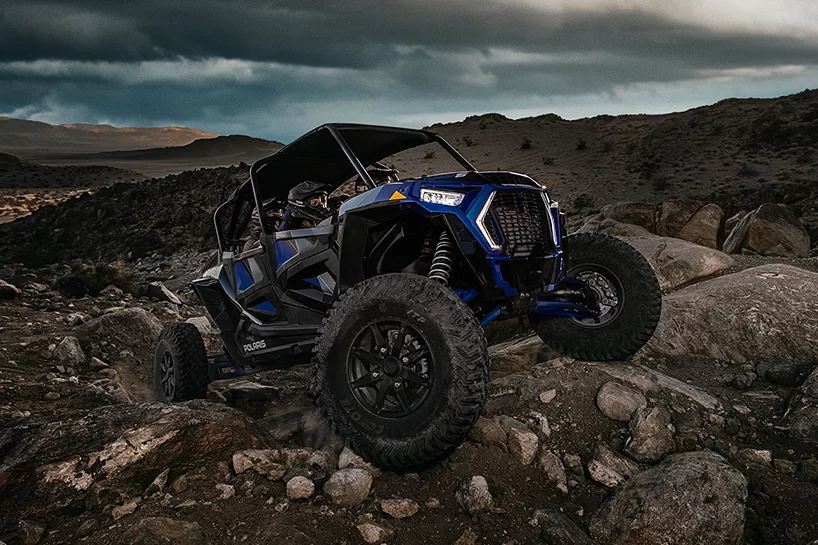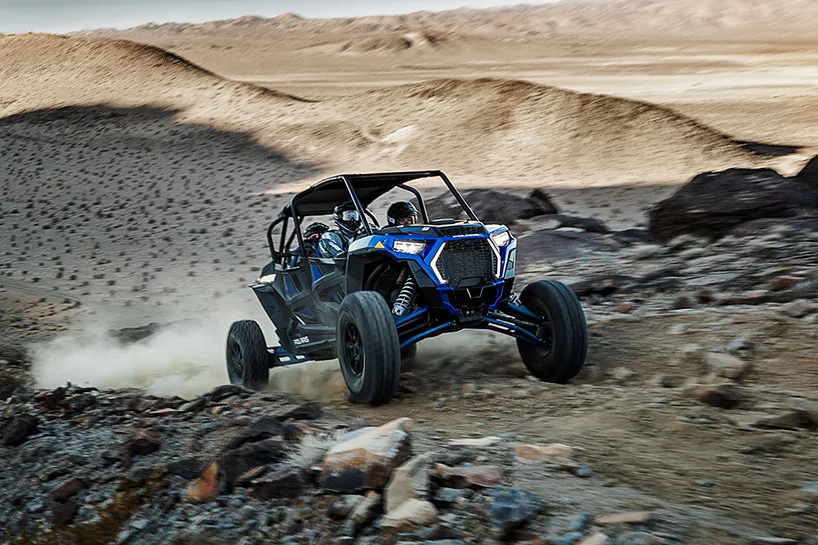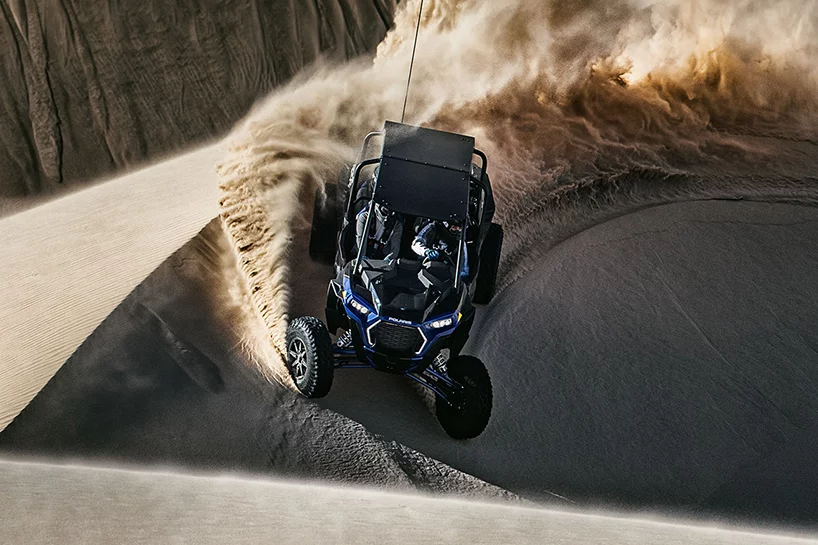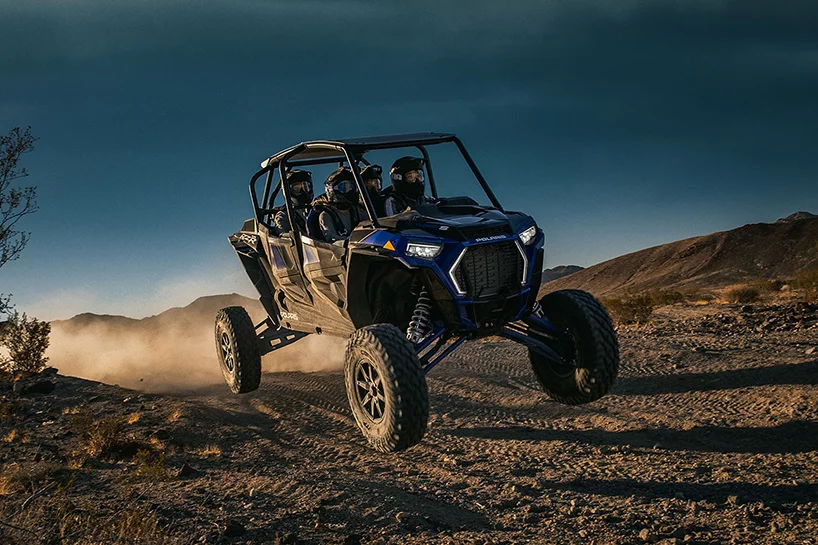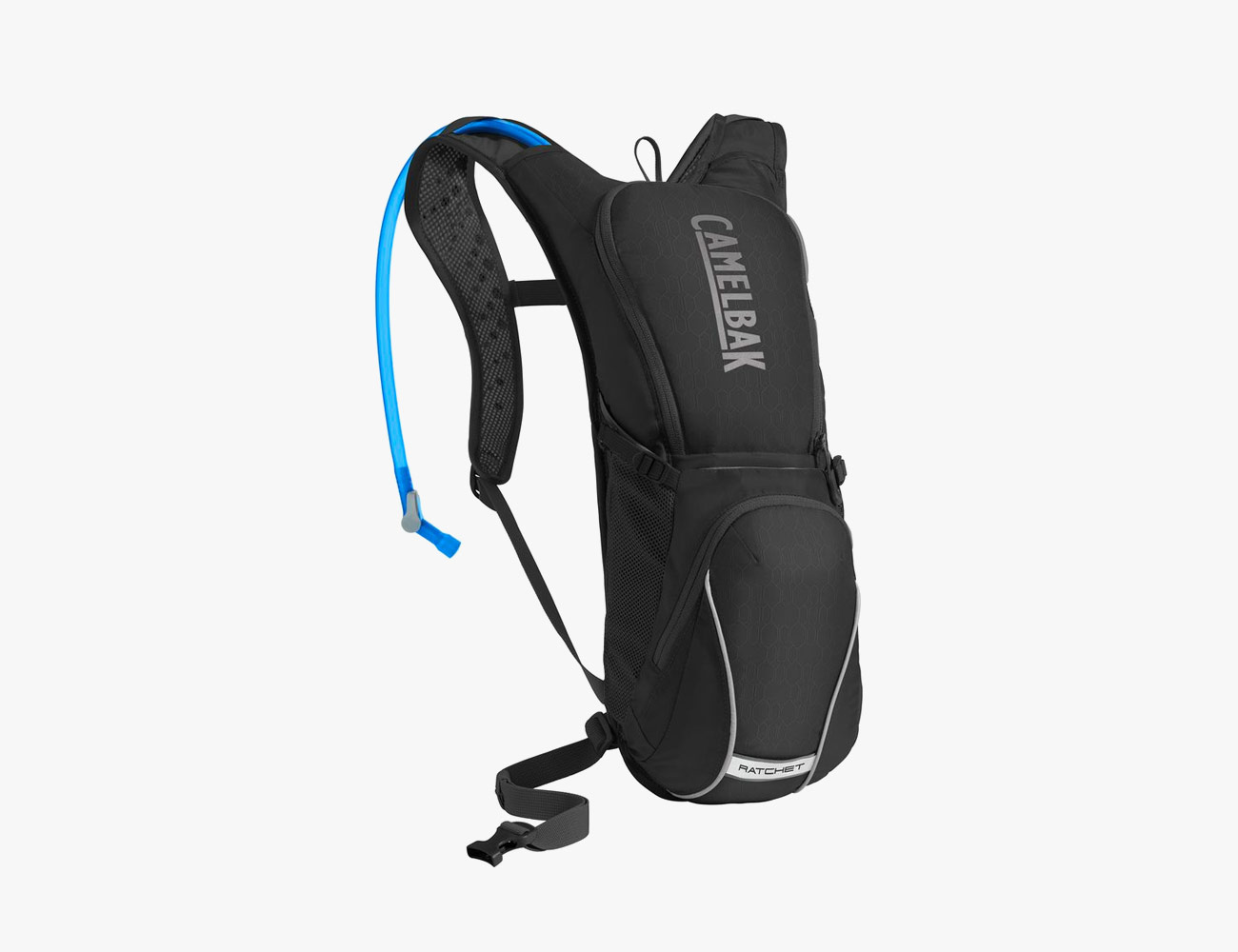When you think of side-by-sides or UTVs, you’ll most likely conjure up images of a roll cage jacked up on an arm’s length of suspension travel, shod with massive tires ripping around desert dunes and tearing through a mountain trail. Or, you’ll picture a seasoned ranch hand puttering along mending a fence or moving hay bails. If you’re in the market for a UTV it’s understandable to see one as too extreme, over the top and unnecessary and the other as dull and joyless. The Polaris General lives at the 50-yard line between the company’s performance-centric RZR and its workhorse Ranger.
The Good: Slinging the General around the surrounding trails and property at the Main Line Overland Festival, it quickly became abundantly clear how a UTV like the 180 horsepower Can-Am Maverick X3 XD S turbo was complete overkill. Unbelievably fun, yes. But, is that much power needed to entertain yourself on a gravel back road or rock crawling path? No. The 100 horsepower the General sends to all four of its wheels is more than enough to get the back end to step out, get you into all sorts of trouble and get you out of that trouble when you come face to face with a boulder or log crossing.
Who It’s For: Overlanders, and active lifestyle types. Considering it’s not too raucous, the General was designed with weekend warriors in mind. It has enough power to keep you on your toes, a utility bed, significant payload capacity, 1,500-lbs winch and the ability to add optional racks, cargo boxes, light bars and tougher rims.
Watch Out For: One problem with Polaris performance UTVs is they inherit the upright seating position from the Ranger. The proper posture works fine when you’re putting the machine to use as a docile cargo hauler, but the minute you want to switch to hooligan mode, the higher seat position multiplies the “we’re about to tip over” feeling.
When it comes to getting the machine optioned exactly as you need it, prices start to climb. The base model doesn’t come with much and a $1,500 jump to the Premium trim only gets you the 4,500-lbs winch, front bumper and painted body panels (which you’ll probably scratch up immediately). The $20,299 Deluxe edition buys you a roof, MTX sound Bar and Fox podium shocks on top of what the Premium offers. And that’s just the two-door model, the four-door starts at $21,299. So if you can live without the bells and whistles, the smart buy is to go with the base and add the roof, cargo boxes and racks, which start around $250.
Alternatives: The most direct competitor to the Polaris is the Can-AM Commander. It certainly looks more aggressive and has better base-level storage options, and the General-equivalent model price is $3,000 below the Polaris. However, the Polaris comes out on top with better suspension, more power and a higher cargo capacity, which, all things considered, are key aspects if whether you’re doing some light off-roading or hailing camp gear.
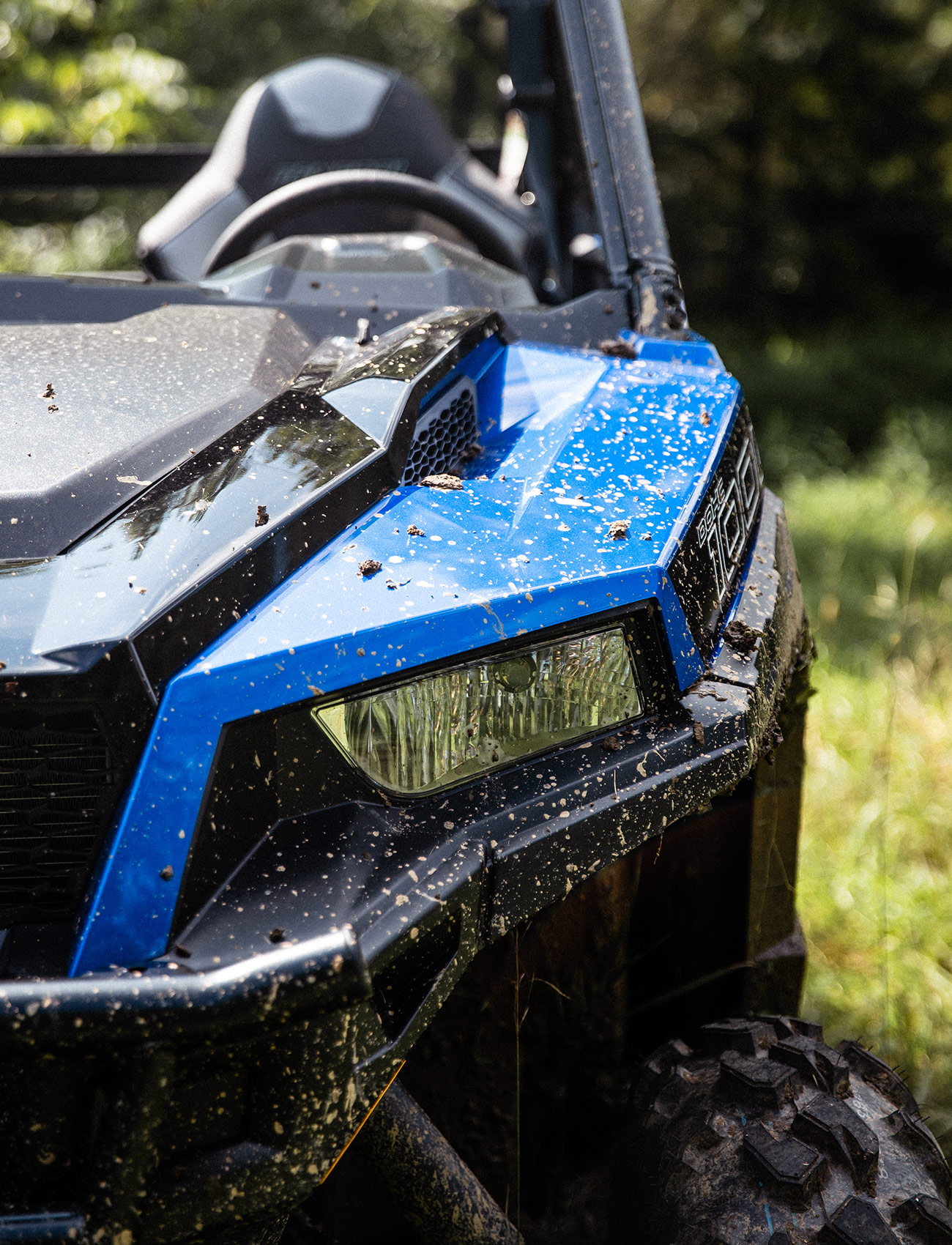
Review: Cutting through narrow trails, crawling over boulders, logs and splashing through boggy mud pits, the General seemed right at home on the dirty side of this year’s Mid Atlantic Overland Festival. But the machine’s dual personality is what sets it apart from the rest of the lineup. When it wasn’t thrashing trails or picking up a front wheel while the back two swung around, the UTV’s ‘utility’ shined through, hauling gear and taxiing people from one side of the campground to the other, to the bonfire and back again. When I wanted to have fun, I had fun. When I needed to tend to a few festival responsibilities, it was right there, willing and able, with one major caveat.
As much as the General champions being the 50-50 mix of the RZR and Ranger, I was split between the two- and four-seater depending on where I was going or what I needed to do. Going for the win at this year’s rock-crawl hill climb challenge or tackling the boulder-strewn trails along the property outskirts? Two-seater. Giving rides across the grounds to campsites, hauling a keg or two to the bonfire or putting the bed to use as skybox seating for the film festival? Four-seater. The longer wheelbase of the four-seater brought out the best of the utility side of the General, but on obstacle trails, the wince-inducing scrapes and slides of knee-high stones and logs along the side rails were enough to permanently appoint it to workhorse status.
Verdict: Just like a Jeep, as an affordable, stripped-down overlander, the General makes a lot of sense. Again, like a Jeep, the base model is incredibly capable fresh from the showroom floor. But if you want the real weekend warrior-mobile with Moab trail tackling suspension, light bars, roof racks, crash bars and cargo boxes, you’d better be prepared to shell out extra cash on top of the MSRP. The General will do what you ask of it and it’ll put a smile on your face the entire time, but that’s entry-level. If you want to make extracurricular overlanding activities easier, it’s pay to play.
What Others Are Saying:
• “On one particular day, we logged just over one hundred miles on some really tight, rough trails at Anthracite Outdoor Adventure Area in Coal Township, PA. The General was really comfortable, providing us with a comfortable ride and spoiling us with some kicking tunes streamed via Pandora through the Bluetooth MTX audio.” — Lance Schwartz, UTV Driver
2019 Polaris General 1000 EPS Key Specs
Two-seater
Engine: 999cc Twin Cylinder
Transmission: Automatic PVT
Horsepower: 100
Torque: 65 lb-ft
Payload Capacity: 1,100 lb
Weight: 1,491 lbs (dry)
Price: $16,299(base)
Four-seater
Engine: 999cc Twin Cylinder
Transmission: Automatic PVT
Horsepower: 100
Torque: 65 lb-ft
Payload Capacity: 1,280 lb
Weight: 1,857 lbs (dry)
Price: $21,299(base)
Read More Gear Patrol Reviews

Hot takes and in-depth reviews on noteworthy, relevant and interesting products. Read the Story
Note: Purchasing products through our links may earn us a portion of the sale, which supports our editorial team’s mission. Learn more here.
